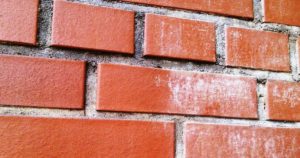
Every year, in October - November, the same question is raised at many construction forums: "How much salt should be added to cement or concrete?"
This question arises for those builders who unsuccessfully calculated their time, and did not have time to complete all cement-concrete work in the warm season. And then BAM!!! The first frosts have gone.
One of my relatives faced this situation last year. In September, it hit him in the head to make a foundation for a garage.
The foundation itself was made of natural stone (in our area it is full and it is the cheapest building material). And finally, I decided to pour concrete formwork over the stone foundation.
And just then the first frosts began. Down to -5 at night. Not for a second without despair, he added salt to the concrete mixture. I looked out the proportions somewhere on the Internet (2% of salt from the total mass of concrete).
The result of this life hack, I saw the other day: the concrete pad was covered with a white coating, and the concrete itself is easily destroyed with an ordinary nail. Well, how can you build a cinder block wall on such a formwork ???
If we compare the advantages and disadvantages of this method of preparing a non-freezing solution, then there are so many minuses that it’s time to think: “Do I need it?” Why add salt to cement?
Benefits of adding salt to cement slurry.
Advantages of the method, at first glance, tempting:
- The low cost of the additive (salt), although I will dispute this longer in the text
- Ability to continue working at low temperatures.
Disadvantages of Adding Salt to Concrete or Mortar
But the disadvantages nullify all the advantages :
- If there are steel structures in concrete, salt eats them up very quickly - no one has yet canceled corrosion
- The strength of hardened concrete also leaves much to be desired.
- A white coating will inevitably appear on the surface of the hardened cement (no matter how you remove it, the coating will appear again and again). And if salt was added to the cement mortar used when laying expensive bricks, then all the beauty will be spoiled by whitish salt stains.
- Salt attracts moisture. Dampness, which will inevitably be present next to such a structure, will remind of this truth.
And what to do?
Now let's take a calculator and do the math.
Suppose you are pouring a cubic meter of concrete. Based on the generally accepted recipe (2% salt of the total volume of mortar or concrete in frost -5 degrees Celsius), it turns out you need 20 kilograms.
A kilogram of rock salt costs 20 rubles. So you will need to spend 400 rubles on this "cheap" supplement.
And now let's estimate how much a special additive will cost your pocket, which is devoid of all the disadvantages of salt and guarantees a high quality end result.
I will not name the brand that I took for calculations - so that you do not think that all this was written in order to advertise some manufacturer.
So, the first additive that comes across costs 160 rubles per 10 liters. Additive consumption at -5 degrees: 8 liters per 100 kilograms of DRY cement.
Suppose that we prepare concrete according to the following recipe: 1 part of cement x 2.8 parts of sand x 4.8 parts of crushed stone. By the way, these are the proportions of B15 concrete. I do all concrete work according to this scheme, using brand 500 cement. I recommend it.
So, in accordance with the "Table of consumption of materials in the preparation of concrete mix", we need about 300 kg of cement for this brand of concrete.
Accordingly, you will have to buy 3 canisters of 10 liters each, for a total cost of 480 rubles. However, we will use only 3x8 = 24 liters, which will cost 384 rubles.
Almost the same as when using salt, even 15 rubles cheaper.
And now the main question: “Why do we need all this hemorrhoids with salt, if the supplement will cost the same? Moreover, the quality of concrete will not suffer ... ”Moreover, the manufacturer claims an increase in strength by 10% and a decrease in cement consumption by 8%.
So, think for yourself - "What to add to cement in cold weather."